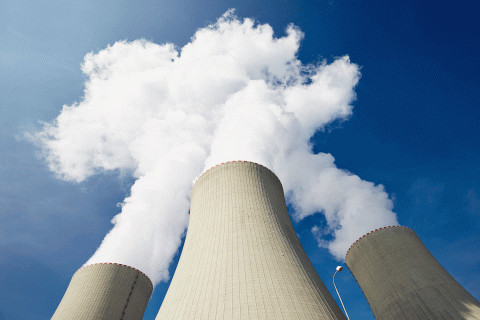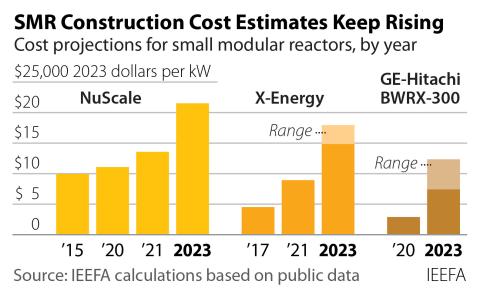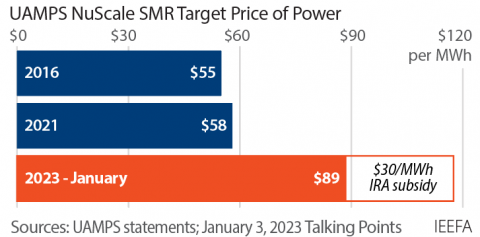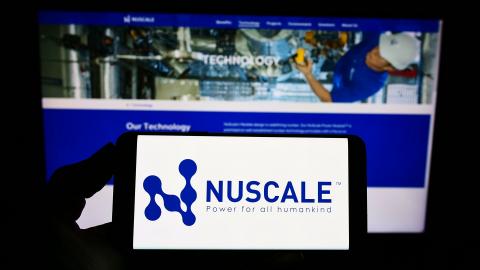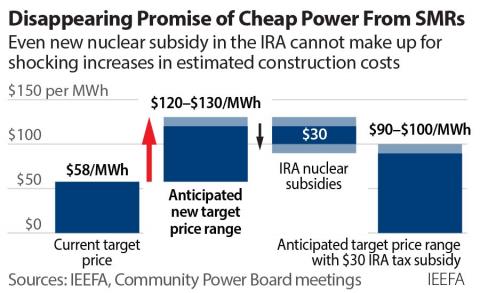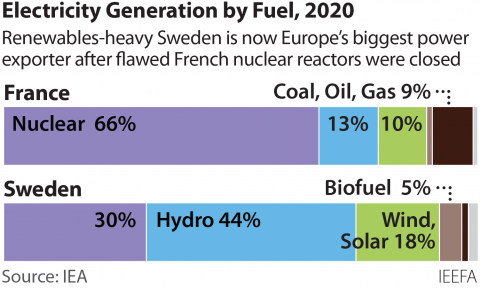Small modular nuclear reactors
Too late, too expensive, too risky and too uncertain
Small modular reactors (SMRs) are the nuclear industry’s attempt to take advantage of the energy transition by providing less-expensive power sources that can be built faster than traditional nuclear reactors. The SMR concept involves building individual reactor components at a central site, then shipping them to different locations for final assembly.
Early results are not promising. Although four dozen companies have designed SMRs, only one design pushed by Oregon-based NuScale has been certified by the Nuclear Regulatory Commission. However, in November 2023, it was announced that this project would be cancelled due to cost overruns and delays.
IEEFA's David Schlissel gives an overview of cost overruns and construction delays below:
There are three SMRs currently operating worldwide — two in Russia and one in China. There’s a fourth under construction in Argentina. But what all of these projects have in common is that their costs have been significantly higher than originally forecast.
SMRs are simply too expensive and too time intensive to play a significant role in transitioning from fossil fuels in the next 15 years, especially when affordable and deployable renewables are already here.
To learn more about how SMRs compare to renewables, watch our video below:
SMRs in the News
- "Energy buffs give small modular reactors a gigantic reality check" (The Register)
- "SMRs too expensive, too slow to meet grid decarbonization deadline: IEEFA" (The Energy Mix)
- "The fantasy of reviving nuclear energy" (The New York Times)
- "David Schlissel: Small modular reactor project likely to end badly for Utah utilities" (The Salt Lake Tribune)
- "Emerging small reactors projected to provide 90 GW of nuclear power to the US grid by 2050: NEI survey" (Utility Dive)
- "NuScale Power, the canary in the small modular reactor market" (Utility Dive)
- "Gov. Youngkin wants a small modular reactor. What exactly is that?" (Virginia Mercury)
